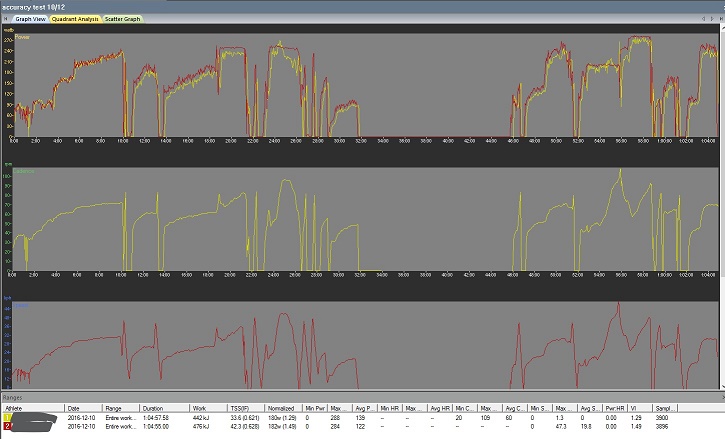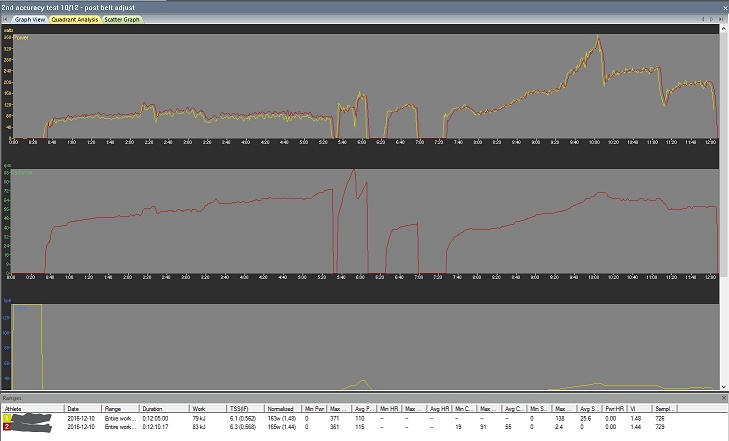I have been having accuracy problems with my kickr for quite a while.
I havn’t been able to verify it until recently, but I have been having some very successful workouts - producing power numbers that I have never seen before.
A few weeks ago my new power2max came. When I ran it on the kickr, I found that there was a very consistent difference of approx +12 watts.
I purchased a calibration kit and used it extremely carefully, but it made no difference.
I took it back to the LBS that sold it to me (and provided the data that demonstrated the difference). They told me that differences between powermeters is to be expected and there was nothing wrong with the kickr.
I was not able to let it go, and continued to work at it. Given the consistent difference, it was looking like an ‘offset’ issue (a ‘slope’ problem would produce varying differences - less at lower workloads and greater at higher workloads).
I did another calibration that I followed with a test ride. I did not do the spindown (as recommended following a calibration) - I noticed that the kickr read consistently with the p2m.
I did a spindown (10 minutes into the ride) - then kickr immediately read high (again about 12/13 watts).
It seemed like the spindown calculated an offset to add to the raw output from the kickr power meter to compensate for loss in the drivebelt etc. The calibration kit applies a known weight to the ‘sensor’ (the plate located next to the flywheel/brake mechanism) - it would allow adjustment of the forces at that point (ie. slope and offset), but would make no provision for the forces/drag imposed in the drive mechanism. Assuming that the ‘spindown’ routine adds an offset to account for these forces, it seemed reasonable to assume that the spindown was not correctly accounting for these forces.
Guided by a hint in another forum post, I looked at the drive belt - it was significantly below the recommended tension (approx 15-20mm of play). This would explain the strange noises the kickr has been making for quite a while.
I adjusted the belt as per the wahoo instruction video and did another calibration (followed by a test ride).
This time the kickr read approx 10 watts lower than the p2m before the spindown. After the spindown (at 6 minutes), it tracked well with the p2m.
I know that the second test was quite short, but it seems to show a clear change (hopefully a lasting improvement).
I have attached images of the pre and post belt adjust power comparisons. I have also attached an image of the original test ride, which showed the consistent 12 watt difference.
Notably, the spindown time reduced from 20 seconds to 11 seconds. It is also a lot louder now.
Hopefully this is helpful for someone.


